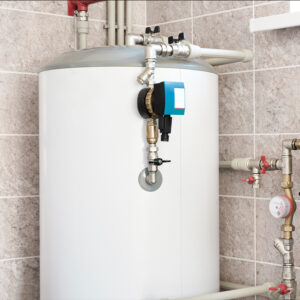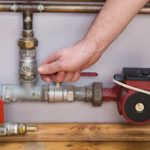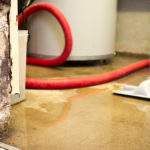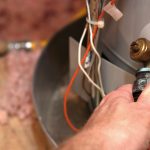 If you took a look at your current water heater, there’s a great chance it’s an open-combustion unit. While these are the most common among households, they may not be the most efficient or the safest.
If you took a look at your current water heater, there’s a great chance it’s an open-combustion unit. While these are the most common among households, they may not be the most efficient or the safest.
Open-Combustion Water Heaters vs. Sealed Combustion Water Heaters
An open-combustion water heater draws air from the space around the appliance to mix with the natural gas. It then burns the mixture of gas and air to heat the water in the water tank. The combustion gases are then exhausted to the outside of the home through the flue (also called a chimney).
Unlike the open-combustion water heater, the sealed combustion water heater’s process is completely isolated from your homes indoor air. It draws in air from the outside into the gas burning appliance and then exhausts the gases through another pipe to the outdoors through vents.
Problems with Open-Combustion Water Heaters
While they are the most common in homes, open-combustion water heaters can create problems within your home. Infiltration in the home increases when you run an open-combustion water heater in a conditioned space. As a result, energy bills will be higher and water heaters already account for 19% of the energy used in a typical home.
Another concern is that the negative pressure can backdraft the water heater. The gap between the top of the water heater and the bottom of the flue (while it’s designed to draw air in to aid the natural draft (stack effect) of the water heater) allows air to come down the flue. This will happen if the air pressure in the room is low enough relative to the air pressure where the flue terminates outside. Now instead of gasses going out the flue, they enter the room. This changes the combustion process, resulting in more carbon monoxide in the combustion gases.
Benefits of Sealed Combustion Water Heaters
As the entire combustion process takes place in a sealed compartment inside the tank there is no heat lost, making it more efficient than open-combustion units. While the base unit itself is more costly to install than an open-combustion, the operating costs are reduced. They may use the same amount of fuel for the combustion process but they do more with that fuel in less time, therefore consuming less fuel overall.
Sealed combustion units are far safer than open-combustion. A sealed unit reduces the risk of carbon monoxide leaks and poisoning as well as reducing the risk of back-drafting. Since the entire combustion process occurs within the tank itself, you also are not required to install it in a fire rated room, making the installation process easier.
While the initial costs of installation can be intimidating, shifting from an open-combustion water heater to a sealed combustion water heater can protect you in your home.



